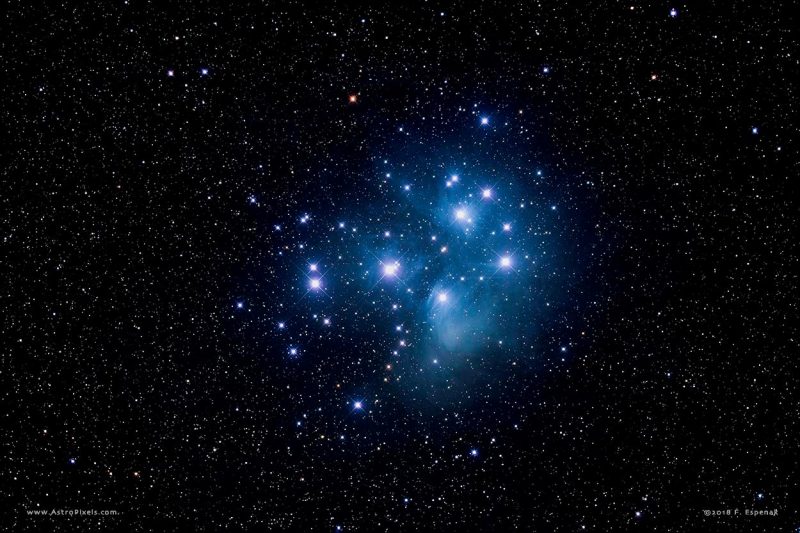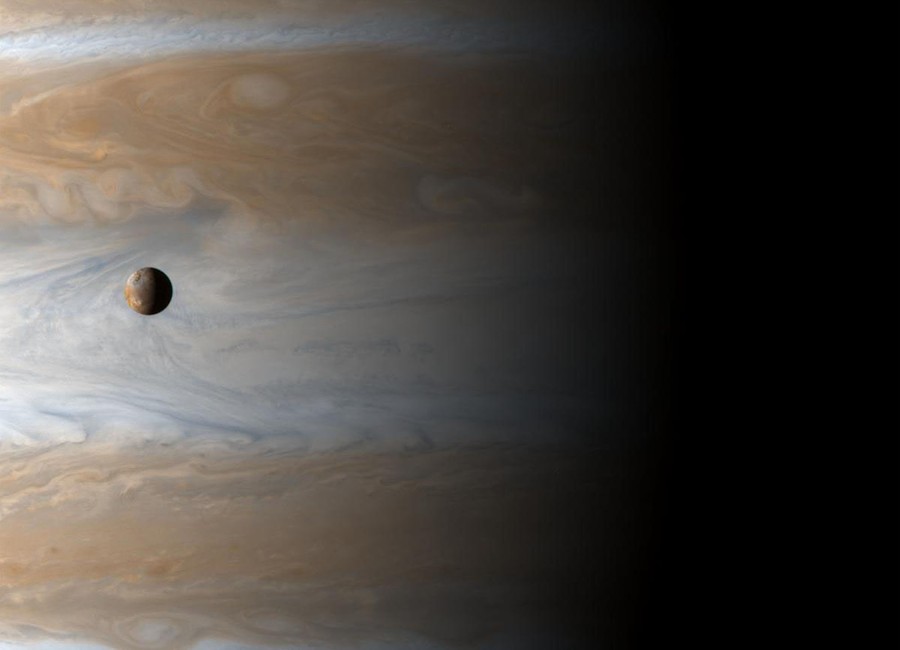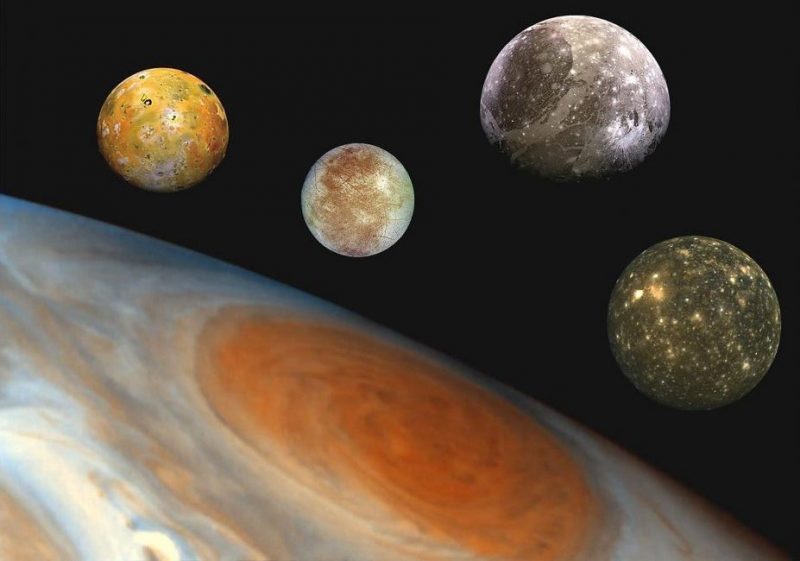Where would you travel to if you had an extrasolar spacecraft?
Page 2 - Seeking answers about space? Join the Space community: the premier source of space exploration, innovation, and astronomy news, chronicling (and celebrating) humanity's ongoing expansion across the final frontier.
You are using an out of date browser. It may not display this or other websites correctly.
You should upgrade or use an alternative browser.
You should upgrade or use an alternative browser.
Thanks @Catastrophe. Also, I know that light year is a measure of distance, but the calculation is easier than that. Distance is Velocity/Time, so with a light year, the distance = (1 year x 5.88 x 10^12 miles/year). The year terms cancel out and you are left with a distance (miles in this case). Travel time is Distance/velocity, so in the case of traveling at 1% of the speed of light, the equation for the time to travel 4.3 light years becomes Travel Time = (Distance term: 4.3 years x 5.88 x 10^12 miles/year)/(Velocity Term: 0.01 x 5.88 x 10^12 miles/year) = The 5.88 x 10^12 terms cancel out, as do the miles/year terms, so the equation simplifies out to: Travel Time = 4.3 years / 0.01 = 430 years.Thanks to Epiphany the correct answer is
Therefore I agree 438.356 years instead of 4383.56 years.
But do you really mind which time it takes you?
Remember the question was:
Where would you travel to if you had an extrasolar spacecraft?
We are not told how fast the ESS can travel. Once you go at speeds approaching light there are serious complications (especially starting and stopping) also fuel to accelerate to such speeds.
Cat
P.S. I ignored relativistic effects which probably would not change the answer materially.
For example, I took 4.3 instead of 4.243 light years for the distance of Proxima Centauri.
And alpha Centauri is 4.367 light years away. So approximations were made.
Where would I go in an extrasolar spacecraft? No where given physics as we know it today, because I wouldn't want to either stay awake for 100's or 1000's of years or be put in science fiction "hibernation" for that time. As you noted, tons of serious issues with traveling any serious fraction of the speed of light, including energy, as I noted in previous posts.
However given some magic new physics where I could explore lots of systems in a Star Trek like "5 year voyage", I'd like to explore for life on other planets (intelligent or not). I'd probably start with the Alpha Centauri system, use what we learn at that system to change our target filter, then go to the next most likely system, then shampoo/rinse/repeat. I do think there are a lot of things we haven't discovered about reality, so I'm still hopeful for a warp drive. Of course, I am still hopeful about Bigfoot, so maybe I'm a bit too optimistic. ;->
Catastrophe
"Science begets knowledge, opinion ignorance.
Epiphany, you say: "the calculation is easier than that. Distance is Velocity/Time, so with a light year, the distance = (1 year x 5.88 x 10^12 miles/year). The year terms cancel out and you are left with a distance (miles in this case)."
"Distance is Velocity/Time" is not correct, because it rearranges to
Velocity =Distance x Time. Velocity is "miles/hour" or Distance / Time.
You then state "so with a light year . . . (1 year x 5.88 x 10^12 miles/year".
Why do you say 1 year x 5.88 etc.? It is obvious that year/year cancels out, but in your statement you are saying 1 year (time) x (number) x miles per year cancels out. You are just multiplying and dividing by year and saying they cancel out when you have just made it so. There is no equation there.
(1 year x 5.88 x 10^12 miles/year) says a light year is 5.88 x 10^12 miles.
How do you get this? Is one of these "year"s a light year? Why do you say "so with a light year"?
"so with a light year, the distance = (1 year x 5.88 x 10^12 miles/year)"
All this says is a light year is 5.88 x 10^12 miles per year. We know that.
There is no equation there, 'except' cancelling out the units.
I really do not understand this at all. Please explain.
Cat
"Distance is Velocity/Time" is not correct, because it rearranges to
Velocity =Distance x Time. Velocity is "miles/hour" or Distance / Time.
You then state "so with a light year . . . (1 year x 5.88 x 10^12 miles/year".
Why do you say 1 year x 5.88 etc.? It is obvious that year/year cancels out, but in your statement you are saying 1 year (time) x (number) x miles per year cancels out. You are just multiplying and dividing by year and saying they cancel out when you have just made it so. There is no equation there.
(1 year x 5.88 x 10^12 miles/year) says a light year is 5.88 x 10^12 miles.
How do you get this? Is one of these "year"s a light year? Why do you say "so with a light year"?
"so with a light year, the distance = (1 year x 5.88 x 10^12 miles/year)"
All this says is a light year is 5.88 x 10^12 miles per year. We know that.
There is no equation there, 'except' cancelling out the units.
I really do not understand this at all. Please explain.
Cat
Yes, Distance = Velocity / Time is a typo, and you can see I used it as Distance = Time x Velocity. There is nothing odd about this. The distance if you travel 2 hours in a car at 60mph is Distance = 2 hours x 60 miles/hour, the hours cancel out and you are left with D = 2 x 60 miles = 120 miles. It's difficult to see equations in a text string, but write out the equations yourself on a paper. If you do you should see that traveling at 1% the speed of light to a star 4.3 light years away will take 430 years exactly. If you don't get that, you've done something wrong. ;->
Catastrophe
"Science begets knowledge, opinion ignorance.
Epiphany,
You are just multiplying and dividing by year and saying they cancel out when you have just made it so.
(1 year x 5.88 x 10^12 miles/year) says a light year is 5.88 x 10^12 miles.
All this says is a light year is 5.88 x 10^12 miles. We know that.
1 x 4.3 x 5.88 x 10^12 miles says if a light year is 5.88 x 10^12 miles then that is 4.3 light years.
I agree with that. When people disagree, I prefer to agree to leave it at that, so thanks for the discussion.
Cat
You are just multiplying and dividing by year and saying they cancel out when you have just made it so.
(1
All this says is a light year is 5.88 x 10^12 miles. We know that.
1 x 4.3 x 5.88 x 10^12 miles says if a light year is 5.88 x 10^12 miles then that is 4.3 light years.
I agree with that. When people disagree, I prefer to agree to leave it at that, so thanks for the discussion.
Cat
Mars, just Mars. Do some spelunking in one of those caverns. Ive done a lot of that here in NM. Carlsbad Caverns isn't the only one. I know of four others.
Three of those other caves the public knows nothing about them, or where they are.
Alpha Centauri sounds very attractive as there are possible Earth-like planets. But at first I would like to visit something more realistic like Mars or maybe one of the biggest Jupiter's moon Ganymede. It would be exciting to see the largest planet in Solar system from the surface of its moon 
Catastrophe
"Science begets knowledge, opinion ignorance.
Catastrophe
"Science begets knowledge, opinion ignorance.
I would like to be in the Pleiades star cluster. Judging what they look like from here, it must be quite a sight from within the cluster itself.

As highly visible heliacal stars, the Pleiades were among the most important celestial body, after the moon, and used for a first astronomic conception. The Pleiades heliacal rising was widely recognised in Austral regions, as the beginning of the new-year and then of agricultural season.
Cat

As highly visible heliacal stars, the Pleiades were among the most important celestial body, after the moon, and used for a first astronomic conception. The Pleiades heliacal rising was widely recognised in Austral regions, as the beginning of the new-year and then of agricultural season.
Cat
Last edited:
WOW! That looks amazing and even a bit frightening to me
Before I saw other pictures(made by artists) and wonder why they didn't make it more plausible with help of modern ways of digital art alike you showed but still it is interesting
Catastrophe
"Science begets knowledge, opinion ignorance.
I would like to be in the Pleiades star cluster. Judging what they look like from here, it must be quite a sight from within the cluster itself.

As highly visible heliacal stars, the Pleiades were among the most important celestial body, after the moon, and used for a first astronomic conception. The Pleiades heliacal rising was widely recognised in Austral regions, as the beginning of the new-year and then of agricultural season.
Cat
Yes, that seems to be really majestic spectacle from around there if even from here a person with normal vision distinguishes 6-7 stars with the naked eye in the Pleiades. Also there is interesting fact that
after 1995, star-like objects - brown dwarfs - were also found in the Pleiades. The fundamental differences between brown dwarfs and ordinary stars largely occur from their small mass (less than 0.07-0.08 solar and from 10 to 60 Jupiter masses). This mass is not enough to glow for a long time due to the energy released during thermonuclear reactions.
Catastrophe
"Science begets knowledge, opinion ignorance.
Don't forget the rest of the cluster: (Wiki: Composition)
"The cluster core radius is about 8 light-years and tidal radius is about 43 light-years. The cluster contains over 1,000 statistically confirmed members, a figure that excludes an unresolved likely further number of binary stars.[46] Its light is dominated by young, hot blue stars, up to 14 of which can be seen with the naked eye depending on local observing conditions and visual acuity of the observer. The arrangement of the brightest stars is somewhat similar to Ursa Major and Ursa Minor. The total mass contained in the cluster is estimated to be about 800 solar masses and is dominated by fainter and redder stars.[46]" My emphasis.
Cat
"The cluster core radius is about 8 light-years and tidal radius is about 43 light-years. The cluster contains over 1,000 statistically confirmed members, a figure that excludes an unresolved likely further number of binary stars.[46] Its light is dominated by young, hot blue stars, up to 14 of which can be seen with the naked eye depending on local observing conditions and visual acuity of the observer. The arrangement of the brightest stars is somewhat similar to Ursa Major and Ursa Minor. The total mass contained in the cluster is estimated to be about 800 solar masses and is dominated by fainter and redder stars.[46]" My emphasis.
Cat
IG2007
"Don't criticize what you can't understand..."
Well, although I see that there are some questions relating to the framework and speed of the spacecraft, I am just going to imagine that I am in an extrasolar spacecraft which uses Alcubierre Drive to get me anywhere. Pardon me, my imagination is not strong enough to say exactly how an Alcubierre Drive will work and how I will get negative mass, but for the sake of the thread, let's consider I own an extrasolar spacecraft which uses Alcubierre Drive.
Now, though the spacecraft's "extrasolar," I would first like to visit our Moon and Mars, as they are pretty interesting places. Then, I would take a tour of Mercury and Venus. After that, I would set out to see the four Galilean moons of Jupiter, especially Europa and then hover over the Great Red Spot of Jupiter. I would then go to Saturn and watch its magnificent beauty and then take a look at Uranus and Neptune for a while. After that, I might look out in the edges of our Solar System for the so-theorised Planet Nine.
After that, I will head for Proxima Centauri B, the closest exoplanet that might have life in it. I would then hover over for more exoplanets till I get bored ( ). I would then try to look around Sagittarius A* and look out for stars and gas giants.
). I would then try to look around Sagittarius A* and look out for stars and gas giants.
I have a lot of plans, but it would be a huge book if I try to write them all here. So, that's that for now.
Now, though the spacecraft's "extrasolar," I would first like to visit our Moon and Mars, as they are pretty interesting places. Then, I would take a tour of Mercury and Venus. After that, I would set out to see the four Galilean moons of Jupiter, especially Europa and then hover over the Great Red Spot of Jupiter. I would then go to Saturn and watch its magnificent beauty and then take a look at Uranus and Neptune for a while. After that, I might look out in the edges of our Solar System for the so-theorised Planet Nine.
After that, I will head for Proxima Centauri B, the closest exoplanet that might have life in it. I would then hover over for more exoplanets till I get bored (
I have a lot of plans, but it would be a huge book if I try to write them all here. So, that's that for now.
All you said sounds so exciting that I even don't know from where to start such journey and whether it is enough whole life to visit my wish-list places(of course spending time during the way in cryo sleep)
Besides star clusters, I am also attracted by various nebulae: Orion, Crab, Eagle, Helix and other.
But also I like the route IG2007 mapped out what about the part in the solar system of it - I would choose the same
what about the part in the solar system of it - I would choose the same 
Besides star clusters, I am also attracted by various nebulae: Orion, Crab, Eagle, Helix and other.
But also I like the route IG2007 mapped out
Catastrophe
"Science begets knowledge, opinion ignorance.
Beautiful view! I have wallpaper on my screen alike that 
I wanted to add that journey to nearest exoplanets would be exciting either. NASA published data on a new exoplanet TOI 700 d. This object is approximately equal to the Earth in size, and is located at such a distance to its star, which could provide liquid water on its surface.

I wanted to add that journey to nearest exoplanets would be exciting either. NASA published data on a new exoplanet TOI 700 d. This object is approximately equal to the Earth in size, and is located at such a distance to its star, which could provide liquid water on its surface.

Catastrophe
"Science begets knowledge, opinion ignorance.
I rotate my wallpaper; not automatically. One is the Veil Nebula.
Catastrophe
"Science begets knowledge, opinion ignorance.
- YouTube
Auf YouTube findest du die angesagtesten Videos und Tracks. Außerdem kannst du eigene Inhalte hochladen und mit Freunden oder gleich der ganzen Welt teilen.
Last edited:
Splendid capability of Hubble Telescope! Other videos there are also worth watching The realization that human was able to create such a wonderful invention like Hubble - gives hope for the possibilityof long-distance space travel in future
The realization that human was able to create such a wonderful invention like Hubble - gives hope for the possibilityof long-distance space travel in future
I think if I had such a ship, or better a ship like in films with an interdimensional jump to quickly travel very long distances, then I would not be limited to anything, I would literally explore everything, every corner of our universe.
I`d like to travel to one of those exoplanets which were claimed as Earth-alike. It would be great to find there some forms of life ( probably even intelligent ) or probably the second Earth.
Just because it has clouds and water doesn't mean it's habitable.
Similar threads
- Replies
- 0
- Views
- 512
- Replies
- 8
- Views
- 3K
- Replies
- 2
- Views
- 1K
- Replies
- 0
- Views
- 575
TRENDING THREADS
-
Hubble Tension explained (including its value) by the two phase cosmology
- Started by Geoff Dann
- Replies: 183
-
New interpretation of QM, with new two-phase cosmology, solves 15 foundational problems in one go.
- Started by Geoff Dann
- Replies: 279
-
-
-
The birth of the Quantum Convergence Threshold (QCT):
- Started by Capanda Research
- Replies: 84
-
Basic Error: The accelerating Universe conclusion - reason
- Started by Gibsense
- Replies: 260
-
Latest posts
-
-
Expansion isn't happening with time, Time is happening due to Expansion -True or False?
- Latest: Curiosity killed the cat
-
-
-

Space.com is part of Future plc, an international media group and leading digital publisher. Visit our corporate site.
© Future Publishing Limited Quay House, The Ambury, Bath BA1 1UA. All rights reserved. England and Wales company registration number 2008885.



